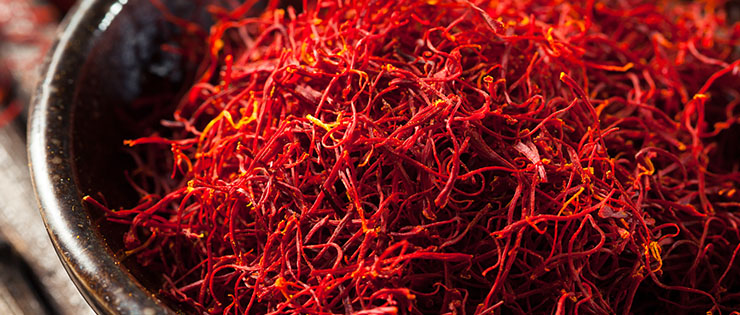
We may not have all has the pleasure of tasting saffron, but most of us have heard about this premium sunshine spice!
So, what is saffron? They are the threads of the flower (aka stamens) derived from the crocus plant typically found in Afghanistan, Turkey, Spain, Greece, Iran and India. It’s well known that it’s one of the most expensive spices in the world, mainly because the flower blooms for a few weeks every year, it’s also very labour intensive as it’s picked by hand and then typically dried to make the spice you can often find in herbal medicine, cosmetics, textile dyes perfumes and most popularly used in cooking - so you start being able to understand its infamous price tag! The good news is you only need to use a mere pinch to grab its flavour and health benefits. A rule of thumb when you notice any fresh food is expensive, is it’s safe to presume that it’s currently or permanently at a low yield, that can be due to climate conditions or simply the nature of its growth cycle.
What to look out for?
The main rule is to try to go for quality over quantity, try to avoid using powdered saffron. When accessing the threads look for thin, evenly sized and deep red/orange with a tiny fleck of yellow on one end. The deeper the colour the more ‘crocin’ it contains which is the beneficial essential oil found in saffron.
What are the health benefits?
Antioxidant rich saffron is used for many conditions, but may particularly benefit people suffering with:
- Alzheimers disease
- Mood disorders
- Menstraul issues
- Premature ejaculation
- Infertility support
- Reduce swelling
- Natural aphrodisiac
How to cook with it?
As a nutritionist I’m always trying to get diversity into people’s diet, trying a new nutrient positive ingredient in your cooking can be the start of a whole new open-minded relationship with food. Saffron used as a seasoning in cooking can infuse a unique aroma and flavour into many dishes. Some classic uses include adding it to breads, cakes, rice, meats, pasta, curries, stews, creamy sauces, risotto, paella, tagines, milk, lassis and tea. Before using steep the desired amount of saffron threads for a couple of minutes in warm water, it will make sure the essential oils leech out to colour the dish being cooked better and make sure the flavour gets event distributed throughout the recipe. A further tip is to add towards the end of your cooking to keep the nutritional benefits. I would advise to relax on other spices when using saffron so it can really take centre stage. If you are using as a natural food dye, you can lightly pound the wet stems to create a paste.